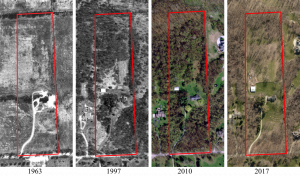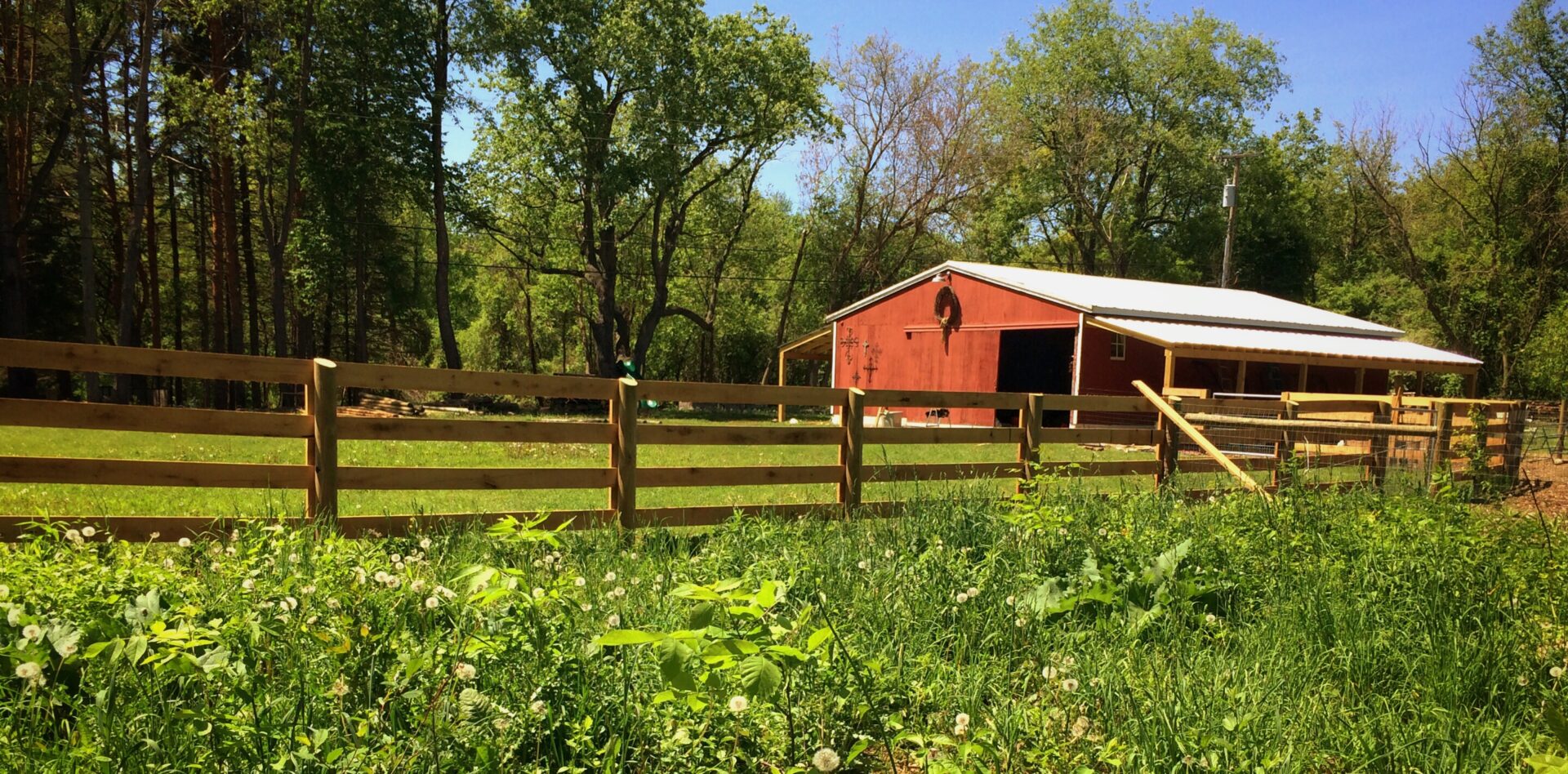A conservationist is one who is humbly aware that with each stroke of the axe he is writing his signature on the face of the land. –Aldo Leopold, Sand County Almanac
Many modern back to the land stories unfold on neglected farmland that is ready to be brought back to life with attention and care. The piece of property on which my story takes place had evolved past neglect: it was simply abandoned to the forest. When we looked out the windows of our old home in the early years, we didn’t see fields onto which we could project agrarian dreams, but walls of vegetation that were wild and unwelcoming. If we wanted to make a farm, we would have to cut it into a forest.
We purchased our home on ten acres in 2011 because of its location — 10 minutes by car to the college where I teach and 3 minutes by foot to my wife’s family’s home — not because of its agricultural potential. Nine of the ten acres were entangled in a web of noxious weeds and vines climbing up through box elders and Russian olive, pioneer plants whose natural function is to reclaim fields for forests. My affection for the place was not yet rooted in time and memory, so I couldn’t help but see my woods as an obstacle to idealized ends. What we wanted for our place and what it had become required me, in the words of Aldo Leopold, “to write my signature on the face of the land.” But how?
The industrial solution to land “development” involves strip-mining sites of their flora, fauna, and topsoil, embodying practices Wendell Berry laments in his poem, “Damage”: “The trouble was the familiar one: too much power, too little knowledge.” But alternatives to the bulldozer are labor intensive, involving either specialized equipment or knowledge and skill. Having neither of these nor a clear vision for our land, hidden as it was, I began working with my oldest sons, 10 and 11 at the time, to write our signature on the land with fire and a Stihl MS290. The work was difficult and tedious and our progress gradual. My sons concluded their last three years of homeschooling by keeping the brushfires burning while I was at work, developing skills they are only beginning to recognize as useful. Felling leaning trees and freeing hung up limbs provided lessons in physics and biology that fortunately did not lead to injury. We had poison ivy somewhere on our bodies during the summer months for five consecutive years. But now entering our seventh year, we finally have enough pasture to support two steers beginning this spring who will start turning sunlight into steak.
 The slow work of clearing the land cultivated within us a deep knowledge of and affection for our place. Clearing land by saw and fire is an intimate process, requiring long periods of labor in one area, providing opportunities to notice the landscape being revealed. As we pulled down the vines, purged the invasive plants, and peeled back layers of woody debris, the offspring of the ancestral red oaks, wild cherry, and black walnut trees that lined the perimeter of our property seemed to reveal themselves. We accomplished some of our best work by restraint, leaving alone what we did not yet understand (and lacked the tools to destroy) until we could discern the best course of action. Since the work took place over all four seasons, we were able to look and see how our land responded to the abundance and absence of light and water to envision new possibilities.
The slow work of clearing the land cultivated within us a deep knowledge of and affection for our place. Clearing land by saw and fire is an intimate process, requiring long periods of labor in one area, providing opportunities to notice the landscape being revealed. As we pulled down the vines, purged the invasive plants, and peeled back layers of woody debris, the offspring of the ancestral red oaks, wild cherry, and black walnut trees that lined the perimeter of our property seemed to reveal themselves. We accomplished some of our best work by restraint, leaving alone what we did not yet understand (and lacked the tools to destroy) until we could discern the best course of action. Since the work took place over all four seasons, we were able to look and see how our land responded to the abundance and absence of light and water to envision new possibilities.
The patient approach to land clearing created time to learn about historic and holistic soil building processes and land use patterns that were appropriate to our scale and regenerative on our landscape. We disbursed burn piles across the property and moved them as they burned, producing biochar to supplement the soil. We rotated pigs into newly cleared areas to turn over the soil and amend it. We practiced hugelkultur by stacking and burying fallen wood on contour so that water would walk, not run off our land. We milled larger ash and cedar trees into boards to expand and restore the barn and harvested smaller ones for fence posts and timber-framed animal shelters. Perhaps more importantly, we learned that field and forest need not be mutually exclusive but can be arranged in a practice known as silvopasture to form mutually beneficial systems.
When I look out my windows now I see an emerging farm I could not imagine when we first moved here: a patchwork of clearings woven into a network of native trees to which we continually add new varieties. Current projects and future plans rely increasingly on observation, and less on research and technology, reflecting the uniqueness of our place and the lessons learned while cutting our farm into the forest.



3 comments
Matt Miller
Stories like this make my pulse quicken. What an exciting work of reclamation.
Russell Arben Fox
This is a wonderful story, one the conveys the importance of family, nature, patience, work, and acceptance in just six short paragraphs and a couple of photos. Bravo for sharing it–and keep up the great rebuilding work you are doing!
Comments are closed.